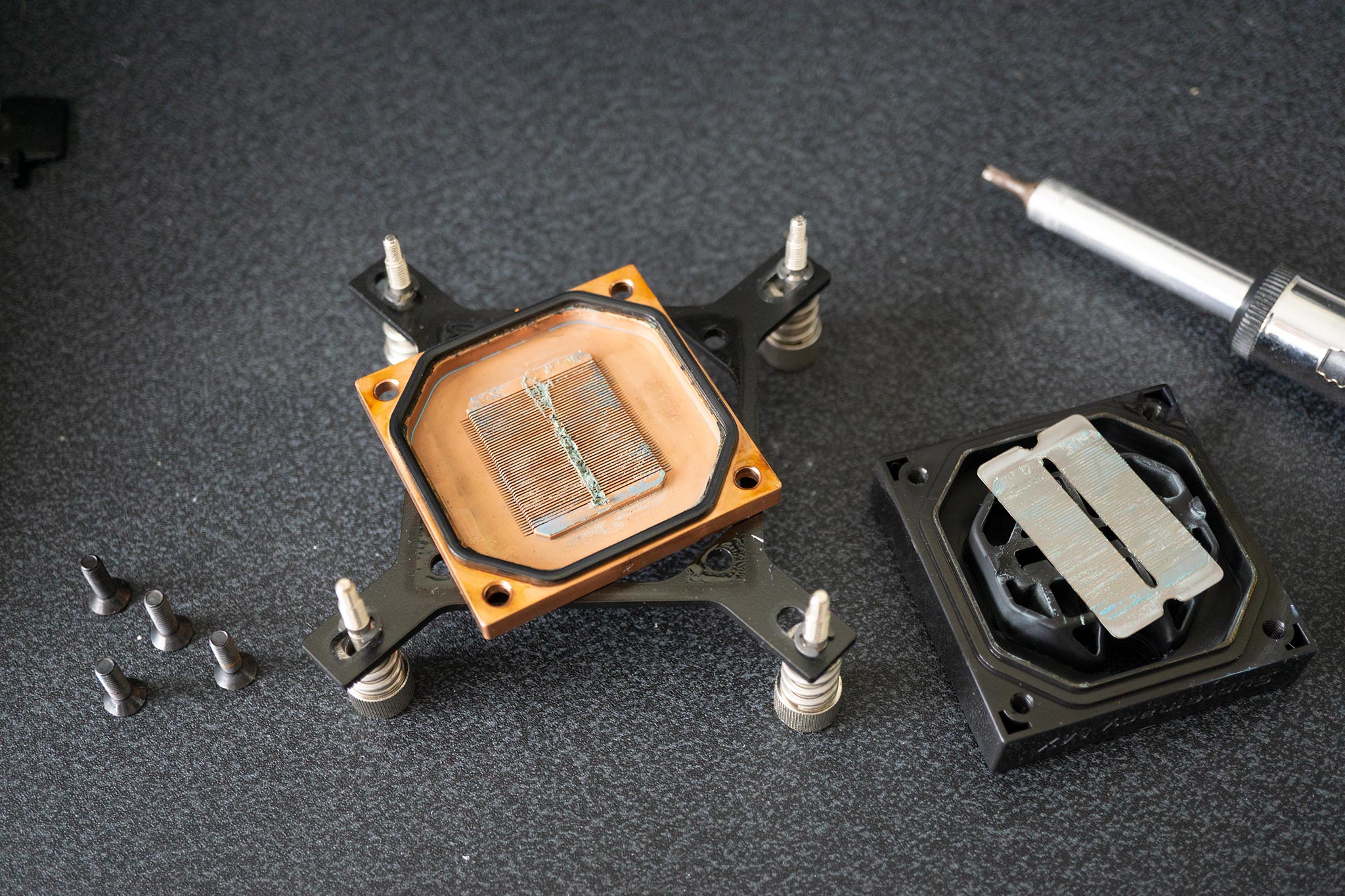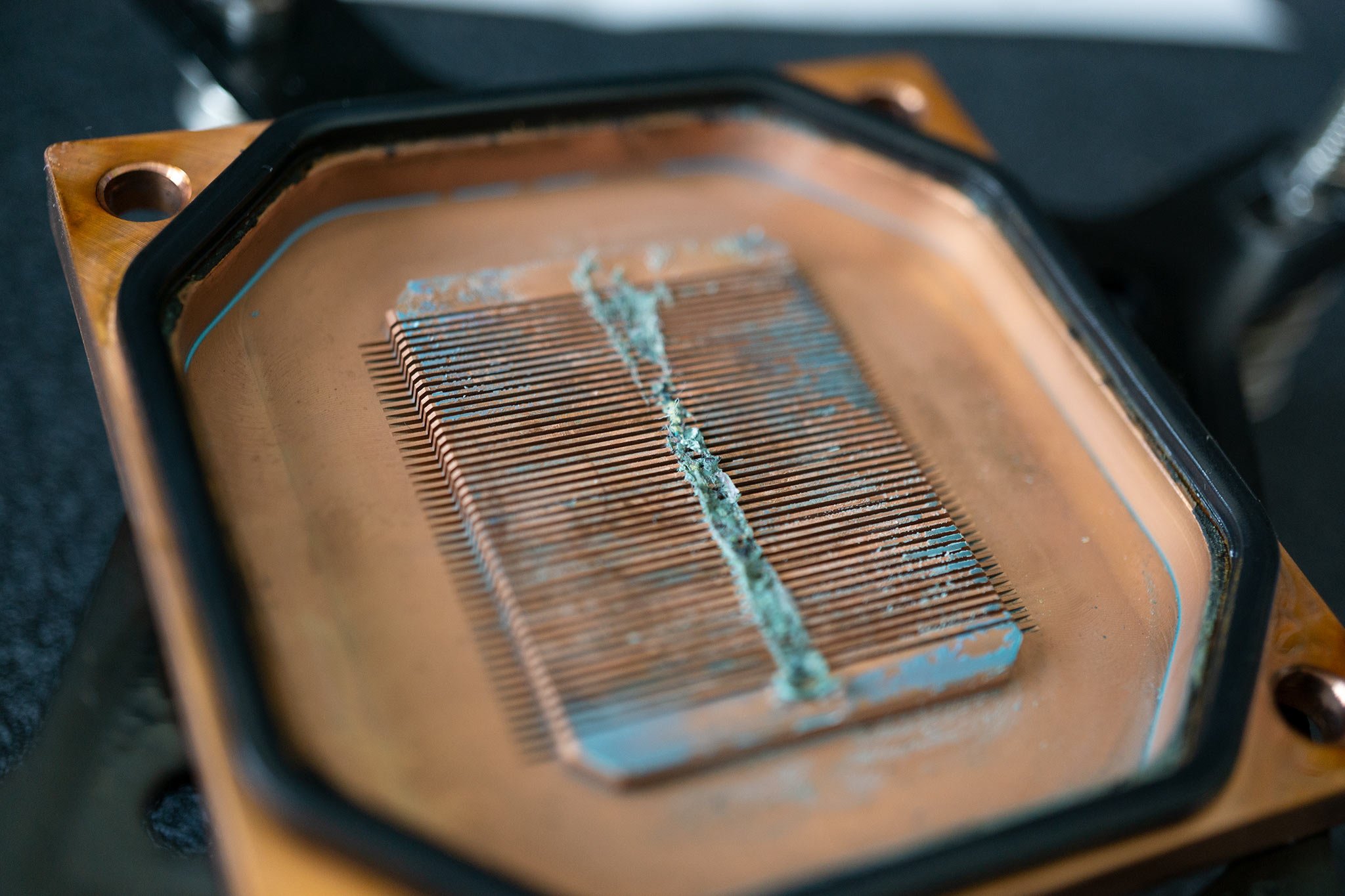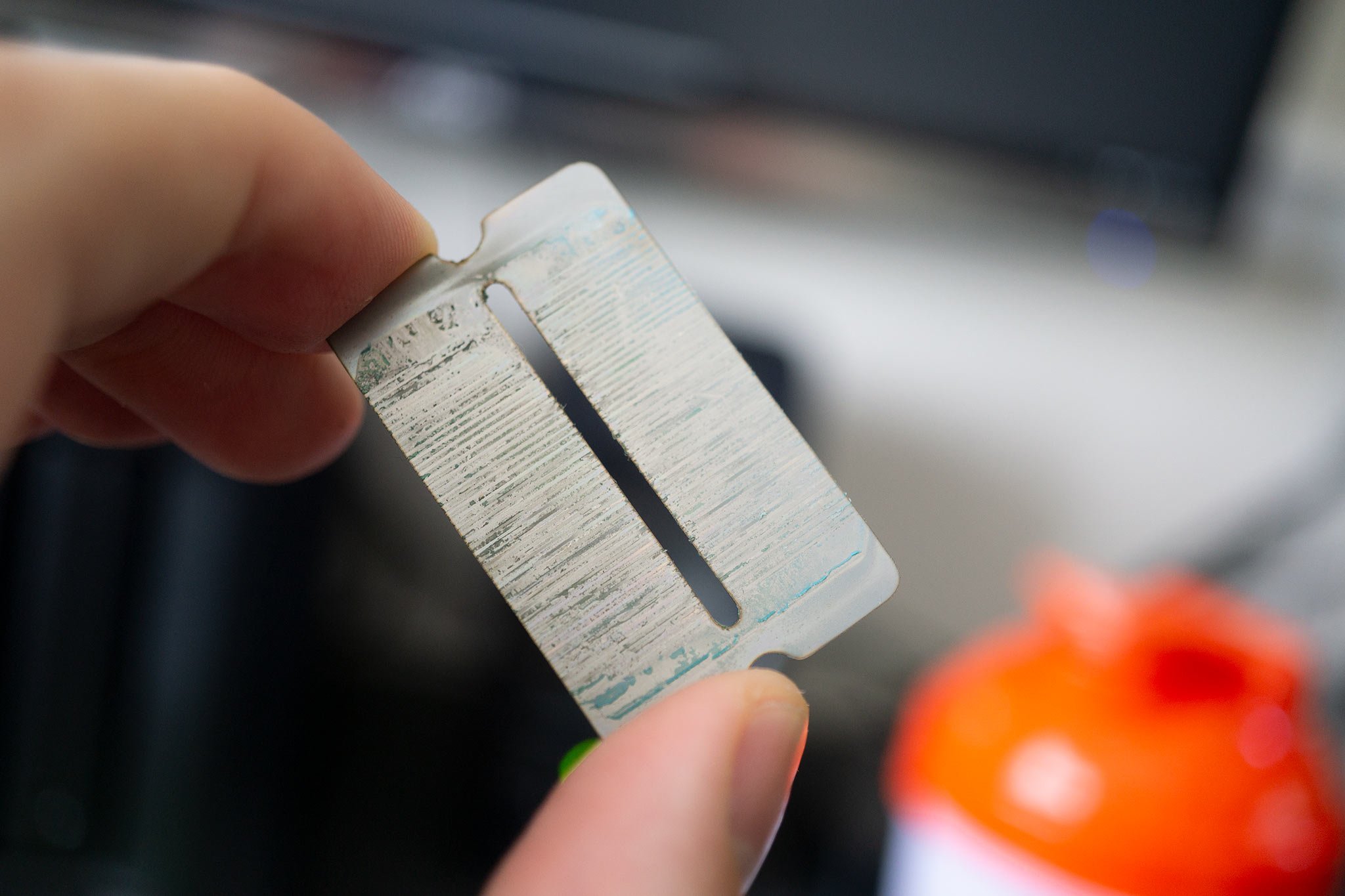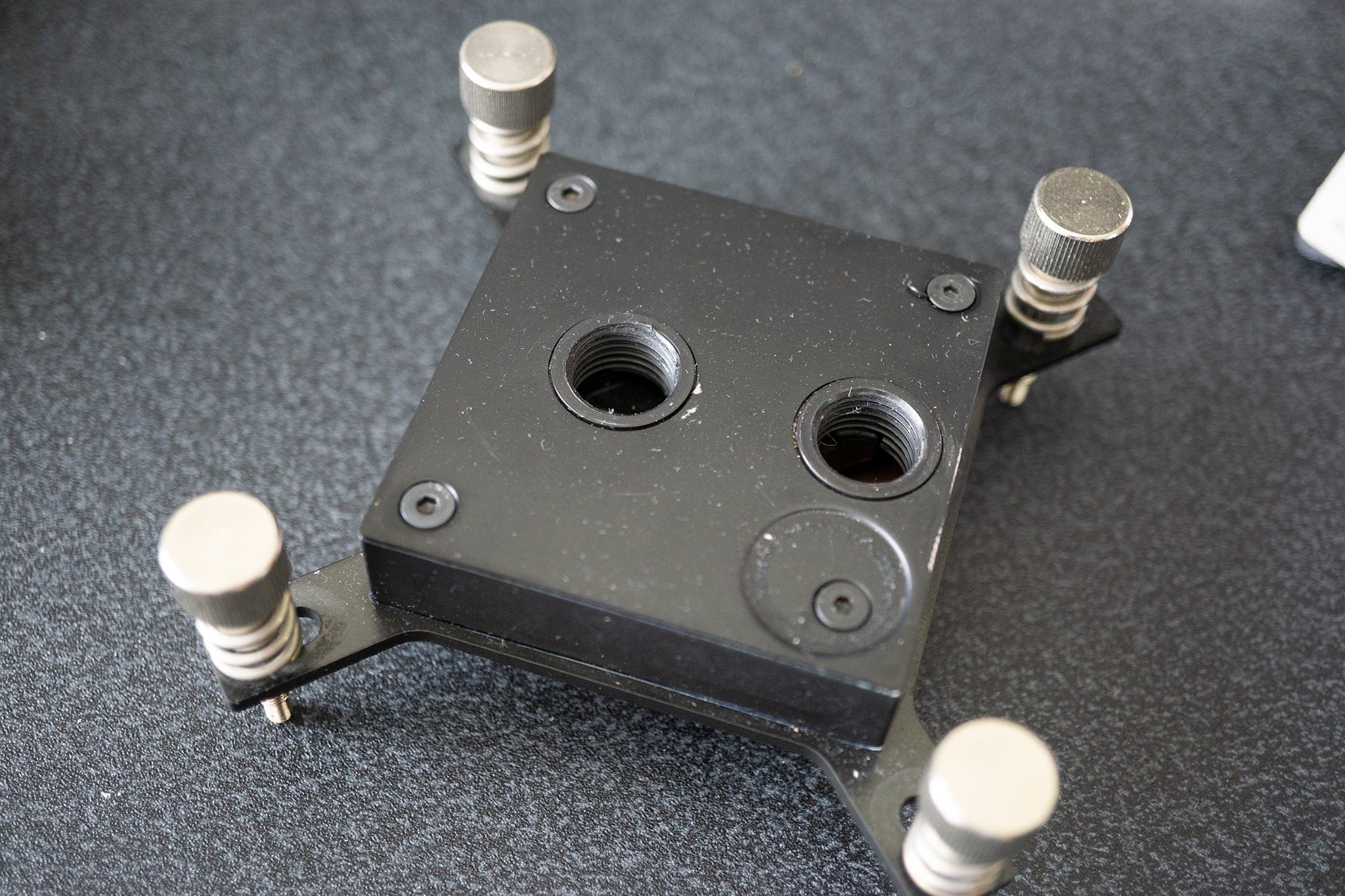How to clean your PC's CPU water blocks
No matter how careful you may be, bacteria will likely grow inside your CPU block. Here's how to clean it out.

The CPU water block handles much of the work in a water loop, including the transferring of heat between the processor and the fluid passing through the block. Due to the nature of using water, even in a well-maintained loop, you're bound to encounter at least some form of growth inside the block. Luckily, it's usually a simple process to take the CPU water block apart, clean it, and seal everything back together again.
It's important to stay on top of your water block cleaning schedule to ensure the component is running at maximum efficiency, and you should keep the loop in general completely clear of all growth. Replacing piping and a radiator but keeping the same old water block may contaminate the new parts if you don't scrub it clean. In this guide, I'll be using a Supremecy MX Evo water block (around $82.99) from EK, sporting a copper base and plexi cover.
Cleaning the CPU water block

The most important tool you will need is a toothbrush. Think of the block as teeth that need a good session of brushing after a night out. While each block may be a little different, these steps should still work:
- Take apart the CPU water block by removing the screws on the base.

- Check each part for corrosion.

- Fill a bowl with warm water.
- Add white vinegar for copper and soap for nickel-plated blocks.
- Submerge the metal parts and allow them to soak. (The plastic or acrylic tops require soapy water.)
- Scrub the fins and other parts with the toothbrush to remove gunk.
- Rinse everything through with distilled water.
And you're done! Just be sure to remember to run some distilled water through the loop once re-assembled before throwing in pastel fluid. This is why it's important to stay on top of keeping growth and gunk at bay, particularly in the water blocks. This restricts the flow of water, especially between the fins, where there is less than a single millimeter of spacing. It takes only five minutes and can make a big difference.
Material consideration

Not one single method of cleaning will work on every water block. It entirely depends on what kind of material the block is made from. Here are general rules when it comes to cleaning block bases and the various tops:
- Acrylic — Good ol' soapy water. Do not use any form of alcohol or abrasive substance.
- Acetal — Just like Acrylic tops, cleaning Acetal with soapy water is recommended.
- Copper — Use slightly acidic cleaning elements like white vinegar or even Coca-Cola to clean the base.
- Nickel — Use only warm water for nickel-plated copper, followed by non-abrasive metal polish. Be sure to rinse with distilled water afterward.
More on PC water cooling
- Everything you need to know about PC water cooling
- Choosing the right radiator
- How to deal with PC water cooling leaks
- PC water cooling Core P5 project
Get the Windows Central Newsletter
All the latest news, reviews, and guides for Windows and Xbox diehards.

Rich Edmonds was formerly a Senior Editor of PC hardware at Windows Central, covering everything related to PC components and NAS. He's been involved in technology for more than a decade and knows a thing or two about the magic inside a PC chassis. You can follow him on Twitter at @RichEdmonds.
